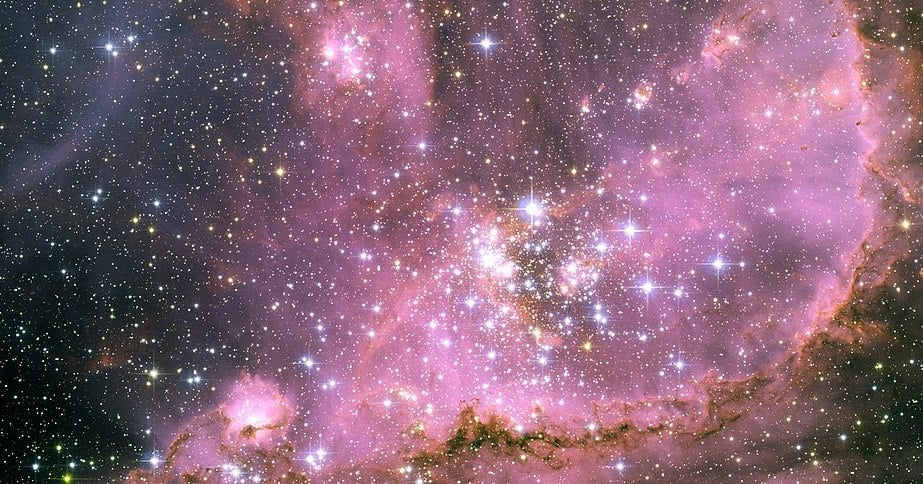 The image of NGC 346, the star-forming region where NASA’s JWST found planet-forming ingredients in a dwarf galaxy known as Small Magellanic Cloud (SMC). Credit: NASA, ESA and A. Nota / Wikimedia Commons / Public Domain
The image of NGC 346, the star-forming region where NASA’s JWST found planet-forming ingredients in a dwarf galaxy known as Small Magellanic Cloud (SMC). Credit: NASA, ESA and A. Nota / Wikimedia Commons / Public DomainNew research published in Nature Astronomy on Tuesday suggests that scientists have found a way to detect the formation of planets.
Researchers used infrared imaging from the James Web Space Telescope (JWST) to detect thermal radiation emitted by warm dust orbiting close to young stars. The dust surrounding the stars indicates that planets are likely to form in the future.
The team of scientists, led by Olivia Jones at the UK’s Royal Observatory, observed hundreds of young low-mass stars in the star-forming region of the SMC called NGC 346.
They found that the dust surrounding the stars is a sign that planets will form as the stars age. These findings help scientists understand whether planets can form efficiently in galaxies with fewer planet-forming materials than the Milky Way.
Using filters on the JWST camera
Scientists have been able to identify stars at different stages of their lives by using filters on the telescope’s camera to detect infrared wavelengths. The team has found enough dust, which is collecting in specific ways, to suggest that the formation of planets is possible.
#DidYouKnow?
The James Web Space Telescope #JWST has detected planet-forming ingredients around hundreds of young stars in the Small Magellanic Cloud, a dwarf galaxy neighbouring the Milky Way. NGC 346 is a dynamic star cluster that lies within a nebula 210,000 light years away. pic.twitter.com/HjHtYFZ7C3
— Tom Fulop-Lover of all things SPACE 🇦🇺 (@TomFulop) April 25, 2023
Stefanie Milam, Deputy Project Scientist for JWST Planetary Science at NASA’s Goddard Space Flight Center in Greenbelt, Maryland, says that spotting the ingredients for planets in NGC 346 has expanded our knowledge of where planets can exist. This new finding provides us with more areas to explore beyond our initial assumptions regarding planet and star formation.
While researchers understand how rocky planets take shape in low-metal galaxies and collect more dust, the mystery of how enough dust survives to support planet formation remains unsolved, according to Jones.
Planets may have been formed during ‘cosmic noon.’
The abundance of rock-forming elements in the SMC is similar to that of galaxies much further away. This covers a period in the history of the Universe about 11 to 12 billion years ago that astronomers call “cosmic noon.”
The team’s findings suggest that the process of planet formation was happening even during this time.
The latest study suggests that planets may have formed during the period mentioned and beyond it, given that the ingredients required for planet formation were detected in the SMC.
The formation of planets starts with tiny grains of sand or dust, which gradually merge to form larger pebbles, which in turn come together to create planetesimals. These planetesimals then collide with each other, forming the cores of planets.
However, it is important to note that the SMC has a lower supply of the essential raw materials needed for the formation of dust, such as silicon, magnesium, aluminum, and iron, in comparison to the Milky Way.

 1 year ago
99
1 year ago
99











 English (US)
English (US)